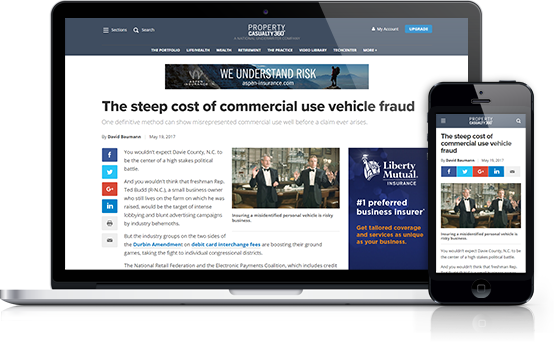 For carriers, independent agents are arguably the most important asset to drive business. On the front lines and in direct communication with customers seeking coverage, they’re also a valuable source to help carriers improve their existing products or develop new ones.
For carriers, independent agents are arguably the most important asset to drive business. On the front lines and in direct communication with customers seeking coverage, they’re also a valuable source to help carriers improve their existing products or develop new ones.
The agent-carrier relationship is critical, and with tools such as agent portals, it’s underpinned by seamless and efficient engagement. In fact, The J.D. Power 2022 U.S. Independent Agent Satisfaction Study found that overall agent satisfaction is highest when they interact with carriers via digital channels. However, with an aging workforce and new, unfamiliar self-service systems and other digital tools, there’s a high likelihood that agents will find themselves in the middle of a difficult digital experience.
When this occurs, agents will disengage and fall back on their go-tos: asynchronous, inefficient communication vehicles like email or the phone. This foils the dual intent of “seamlessness” and “efficiency” afforded by digital engagement. Worse, it may disincentivize agents to place their business with carriers that don’t provide adequate support when agents run into digital snags.
Agents understandably need better support operating and navigating these digital channels effectively.
The evolution of the agent portal — and subsequent challenges
Agent portals have predictably become more complex over the years. Historically, they’ve been places where carriers can post the minimum amount of information about customer policies or agent commissions. While the agent could access and verify the information posted, they could do little else other than email or call the carrier if they found a discrepancy.
New functionalities emerged to enable the agent to submit an online request for marketing materials or to dispute a commission. Agents could also see their license and appointment information, or be alerted when items are expiring or deadlines are approaching.
As the market has become more commoditized, however, carriers have added layers of technology to their portals to better enable their agents in the field. Here, self-service functionality prevails: Agents can initiate quotes or claims, track their commissions, check on compliance changes, access required data and documents, and administer distribution hierarchies — adding in a seamlessness and efficiency not available to email or phone interactions. While each new layer of functionality is an improvement on traditional models, it also brings the potential for agent confusion.
Complicating matters for agents is the need to access multiple carrier portals, with the quality of each portal varying widely. Some carriers post the basics on customers, policies and claims; others provide a full range of information and processes. There is often little training on using these portals and even less support to help them navigate. All of these challenges conspire against efficiency and seamlessness to drive agents back to their trusty email and phone.
The “digital first” customer service solution
Savvy carriers that recognize this gap in support for agents are adopting a “digital first” approach that addresses agent issues in their preferred digital space. “Digital first” enhances the self-service experience with live support from service representatives, all within a continuous digital environment, so there’s no need to disconnect from the portal to find help.
For example, if an agent logs into an agent portal to review commissions and bonuses, an AI chatbot is at the ready to help an authenticated user for easy questions. However, if the agent sees a discrepancy in commissions, they will likely want to speak with a live person right away.
With the digital-first approach, the AI chatbot connects the agent to a service representative. The agent never leaves the portal. The representative can continue the conversation through chat, or use digital voice, video and screen-sharing over the agent’s device. There are even digital-first tools that may indicate the issue should be escalated to a specialist better equipped to help.
A digital-first approach can help in scenarios such as policy information, payments, underwriting, agent compliance and more. The bottom line is that digital first employs the tools to streamline issue resolution so that agents can be more effective and, in turn, carriers can increase agent satisfaction and loyalty.
Glia can help
There’s no doubt that carriers prioritizing agent support and satisfaction is a winning strategy. However, the process of deploying new technologies and tools to achieve this can be a process in itself. That’s where a trusted partner well-versed in delivering premium online experiences can help. With its digital customer service technology, Glia enriches digital engagement so that carriers (as well as banks, credit unions and Fortune 500 enterprises) can better support their clients/agents online, making them more effective and increasing satisfaction.
For more information, please visit www.glia.com.










 Copyright © 2024 ALM Global, LLC. All Rights Reserved.
Copyright © 2024 ALM Global, LLC. All Rights Reserved.